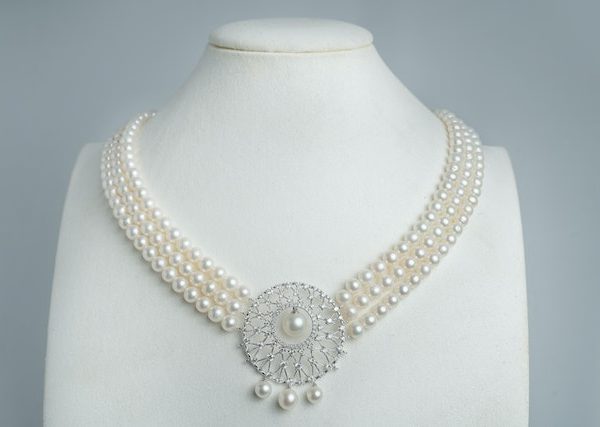Jewelry holds a special place in human culture, serving not only as a decorative accessory but also as a powerful symbol of status, wealth, and love. Throughout history, civilizations have crafted stunning pieces of jewelry, showcasing their artistry and capturing the essence of their time. Join us on an enchanting journey through jewelry history, as we explore the evolution and significance of these timeless treasures.
The Ancient World: Mesmerizing Adornments
The story of jewelry begins thousands of years ago in ancient civilizations such as Egypt, Mesopotamia, and Greece. Jewelry in these early cultures was crafted using materials found in abundance, such as shells, bones, stones, and natural fibers. These objects, often adorned with intricate engravings and symbolic motifs, held cultural and religious significance, symbolizing power, protection, and spirituality.
In ancient Egypt, jewelry played a central role in both religious rituals and the afterlife. Pharaohs adorned themselves with extravagant jewelry, such as intricate collars, headdresses, and pectoral ornaments made of gold, gemstones, and precious metals. These pieces were believed to provide protection, enhance the ruler’s divine status, and display opulence.
The Magnificent Renaissance: A Rebirth of Jewelry
The Renaissance period, known for its flourishing arts and intellectual pursuits, brought significant advancements in jewelry craftsmanship. During this time, jewelry became a celebration of beauty and creativity. Expanding trade routes allowed for the acquisition of gemstones and materials from distant lands, which fueled the proliferation of unique designs and styles.
Influenced by classical Greco-Roman aesthetics, Renaissance jewelry featured intricate metalwork, enameling, and the extensive use of gemstones. Pieces often depicted mythological or religious motifs, emphasizing the unity of art and spirituality. Frames and settings were ingeniously designed to highlight the beauty of gemstones, as diamonds, rubies, sapphires, and emeralds became revered symbols of wealth and power.
The Glamorous Roaring Twenties: Art Deco Elegance
The Art Deco movement, emerging in the 1920s, brought a radical shift in jewelry design. Inspired by geometry and influenced by the Industrial Revolution, Art Deco jewelry featured bold, angular shapes and vibrant colors. The use of diamonds, platinum, and precious gemstones showcased exquisite craftsmanship and luxury.
This period saw the rise of flapper culture, where women challenged societal norms and embraced a newfound sense of freedom and empowerment. Jewelry reflected this shift, with long necklaces, statement earrings, and opulent headpieces. Unlike the delicate designs of previous eras, Art Deco jewelry exuded a strong, bold aesthetic that perfectly captured the spirit of the time.
Modern Times: A Fusion of Tradition and Innovation
In the modern era, jewelry continues to evolve, incorporating a fusion of traditional techniques and innovative trends. From minimalist designs to avant-garde creations, jewelry now encompasses a vast array of styles and materials that cater to diverse tastes.
Contemporary jewelry artists experiment with unconventional materials, incorporating plastics, recycled metals, and organic materials into their designs. Moreover, modern technology has revolutionized the industry, allowing for precise gemstone cutting and advanced manufacturing techniques.
Additionally, there has been a growing interest in ethical and sustainable jewelry. Consumers now value not only the beauty of a piece but also its origin and the impact it has on the environment and communities. This shift has led to the rise of fair-trade gemstones, recycled metals, and a greater emphasis on socially responsible practices.
A Timeless Tale Continues
The allure of jewelry has stood the test of time. From ancient civilizations to the present day, jewelry has played a pivotal role in human culture, transcending boundaries and language. As we marvel at the stunning adornments of the past, let us celebrate the diversity, creativity, and enduring beauty of jewelry, for it is a testament to the artistic brilliance and human spirit.
